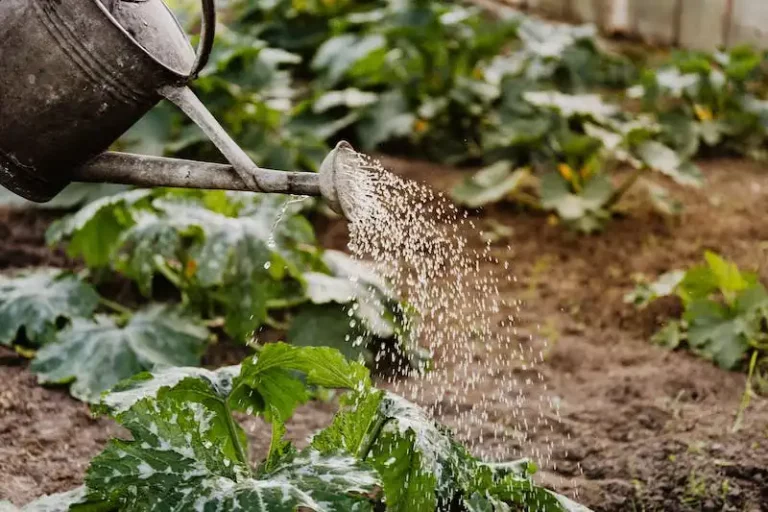Azaleas are a very popular flowering plant that can add beauty and color to any landscape. If you are thinking of adding azaleas to your garden, it is important to know a few tips on how to care for them and help them thrive. This article provides valuable wisdom on selecting the right variety, planting, providing sun and water, and dealing with diseases.
First, when selecting an azalea, be sure to choose one that fits the requirements of your landscape. Some azaleas prefer full sun, while others can tolerate more shade. You should also consider the blooming time of the azalea, as some varieties bloom in the spring and others bloom later in the year. Knowing these factors will help you choose the perfect azalea for your home.
Once you have selected your azalea, it is time to plant it. Azaleas generally prefer well-drained soil with a pH level of 5.5 to 6.5. If your soil does not meet these requirements, you can amend it by adding organic matter or sulfur. When planting your azalea, make sure to dig a hole that is about twice the size of the root ball and plant the azalea at the same level it was growing in the container. After planting, be sure to water the azalea thoroughly.
Azaleas need regular watering, especially during hot and dry periods. They generally require about 1 inch of water per week. It is important to water the azaleas deeply, soaking the soil to a depth of at least 6 inches. However, be careful not to overwater, as azaleas can suffer from root rot if the soil becomes too saturated. To retain moisture and provide more even water distribution, consider applying a layer of mulch around the base of the plant.
When it comes to sunlight, azaleas prefer partial shade. They can tolerate some direct sunlight, but too much can scorch the leaves and cause them to turn yellow. If you live in a hot climate, it is recommended to provide some protection from the afternoon sun. You can do this by planting your azaleas near taller trees or placing them on the east or north side of your home.
Azaleas are also susceptible to diseases, such as powdery mildew and lace bugs. To prevent these issues, it is important to keep the azalea’s foliage dry and provide good air circulation. Avoid overcrowding the plants and remove any fallen leaves or debris. If necessary, you can use insecticides, such as Sevin, to control pests. However, be sure to read and follow the instructions carefully.
In conclusion, growing azaleas requires careful consideration and attention. By selecting the right variety, providing the necessary sun and water, and taking steps to prevent diseases, you can enjoy the beauty of azaleas in your garden year after year. Remember these tips and your azaleas will flourish and become a noteworthy addition to your landscape.
How to Grow Azaleas
Azaleas are beautiful flowering plants that can add color and vibrancy to any garden or landscape. They are highly sought after for their stunning blooms and attractive foliage. If you’re thinking about growing azaleas in your garden, here are some key tips to consider:
Selecting the Right Azalea: When selecting azaleas for your garden, think about the colors you want and the size of the plant. Azaleas come in a variety of colors, including pink, white, red, purple, and more. They also come in different sizes, ranging from 1 to 6 feet in height. Choose the ones that fit well in your garden and complement the overall landscape.
Planting: Azaleas thrive in well-drained, acidic soil. Make sure to choose a location in your garden that provides them with partial shade, especially during the hot afternoon hours. Azaleas have shallow roots, so planting them in well-drained soil is essential to prevent waterlogged roots.
Feeding and Fertilizing: Azaleas are relatively easy to feed and maintain. Use a fertilizer specifically formulated for acid-loving plants, and apply it according to the instructions. It’s also a good idea to periodically check the soil pH levels and adjust if necessary. Additionally, azaleas benefit from a monthly application of water-soluble fertilizer during the growing season.
Pruning: Pruning azaleas is necessary to maintain their shape and encourage new growth. The best time to prune is right after the flowers have faded. Remove any dead or damaged branches, as well as any branches that are crossing or rubbing against each other. Pruning will help the azaleas renew their growth and produce more flowers the following year.
Pest and Disease Control: Azaleas are susceptible to various pests and diseases, including fungal infections and lace bugs. Regularly inspect your plants for any signs of pests or diseases, and take appropriate action immediately. Use insecticides like Sevin according to the instructions to control pests. It’s also important to keep the garden area clean and remove fallen leaves and debris, as they can harbor pests and diseases.
Tips for Multi-Season Azaleas: Some azalea varieties offer multi-season interest, with beautiful flowers in addition to attractive foliage. If you want azaleas that provide interest throughout the year, look for varieties like “Tammy” or “Buddy.” These azaleas have colorful blooms in spring and also offer vivid foliage that lasts through fall.
By following these tips, you can successfully grow azaleas and enjoy their stunning flowers and foliage in your garden. For more in-depth information on growing azaleas, consider downloading a comprehensive growing guide or subscribing to a gardening newsletter that provides expert advice for azalea enthusiasts.
Growing Tips and Varieties
When it comes to growing azaleas, there are a few important tips to keep in mind. Azaleas are known for their beautiful flowers, and with the right care, they can bloom for several weeks. Azaleas are perennial plants that belong to the rhododendron family. They come in various varieties, including the popular Encore series, which features repeat flowering.
Azaleas prefer to be planted in well-drained soil with a slightly acidic pH. If your soil is not naturally acidic, you can amend it with materials like sulfur or peat moss to create the right environment for the azaleas to thrive. It’s also important to choose a spot that provides the right amount of sunlight. Azaleas do best in partial shade or filtered sunlight, so avoid planting them in full sun.
When it comes to watering, azaleas like to have plenty of moisture, but they don’t like to be over-watered. It’s important to water them regularly, especially during dry periods or when they are flowering. One common sign of under-watering is wilted leaves, so keep an eye out for that. An easy way to check if azaleas need water is to stick your finger about an inch into the soil. If it feels dry, it’s time to water.
Fertilizing azaleas is also important for their proper care and growth. Azaleas have specific nutrient needs, so it’s best to use a fertilizer that is formulated specifically for acid-loving plants. Slow-release fertilizers or water-soluble fertilizers are good choices. Fertilize azaleas in early spring and late summer or according to the instructions on the fertilizer package.
Another important aspect of azalea care is pruning. Pruning can help stimulate growth and maintain a desired shape. Prune azaleas right after they finish blooming, usually in early summer. Remove dead or overcrowded branches, and be sure to use clean, sharp shears to avoid damaging the plant.
Azaleas are generally hardy plants, but they can be susceptible to some pests and diseases. Two common pests to watch out for are lace bugs and spider mites. To control these pests, you can use insecticidal soaps, such as Sevin, or other pesticides that are labeled for use on azaleas. It’s important to follow the instructions on the pesticide label and only use them as needed.
In terms of varieties, there are many azalea options to choose from. Some popular varieties include the ‘Gumpo Pink’ azalea, which has small pink flowers and is well-suited for smaller spaces, and the ‘Autumn Embers’ azalea, which has vibrant red-orange flowers and blooms in the fall. If you want azaleas that bloom throughout the year, you may want to consider the Encore series, which includes varieties like ‘Autumn Royalty’ and ‘Autumn Sunset’.
Now that you know the basics of growing azaleas, it’s time to get started. Whether you’re a beginner or an experienced gardener, azaleas can add beauty to your home or garden. Take the time to choose the right varieties, prepare the soil, and give them proper care, and you’ll soon be rewarded with a stunning display of flowers.
If you want to learn more about azaleas and their care, there are many resources available online and in gardening books. You can also check with your local garden center for specific advice and tips for your area. Happy gardening!
For daily wit wisdom sign up for the Almanac newsletter
If you want to receive daily wit and wisdom about gardening, sign up for the Almanac newsletter. It’s a great way to stay informed and learn helpful tips and advice. Whether you’re a beginner or an experienced gardener, this newsletter will provide you with valuable insights and inspiration.
The first thing to know about azaleas is that they thrive mostly in zones 5-9. These beautiful flowering shrubs can suffer from various problems such as mites, bugs, and diseases, so it’s important to know how to care for them properly. Azaleas are common in many areas, especially in Asia, and come in a variety of colors and forms.
If you’re new to azalea care, it’s important to start with the basics. Azaleas need well-drained soil and love acidic conditions. They should be planted in a location that receives full morning sun but is shaded in the afternoon. Water azaleas thoroughly and regularly, but be careful not to overwater, as this can cause root rot.
Fertilizing azaleas is also important for their overall health and blooms. Use an azalea-specific fertilizer and follow the instructions carefully. In addition to regular feedings, azaleas may benefit from an additional application of fertilizer in the summer if they’re not blooming as much as you’d like.
Pruning azaleas is an essential part of their care. It’s best to prune them right after they finish blooming, as this will encourage new growth and more blooms for the next year. Remove any dead or damaged branches, and shape the shrubs as desired. Just be careful not to prune them too heavily, as this can inhibit flowering.
If you’re looking for a variety of azaleas that will give you blooms in both the spring and fall, consider the Encore® azalea. These remarkable shrubs offer a show of flowers twice a year and are known for their large blooms and vigorous growth. They come in a range of colors and are a great addition to any landscape.
When it comes to azalea care, watering, fertilizing, and pruning are the key steps to keeping your plants healthy and beautiful. With a little attention and proper care, your azaleas will reward you with vibrant foliage and stunning blooms.
So, if you’re a fan of azaleas or just want to know more about these gorgeous shrubs, sign up for the Almanac newsletter today. With daily wit and wisdom delivered to your inbox, you’ll become an azalea care pro in no time!




